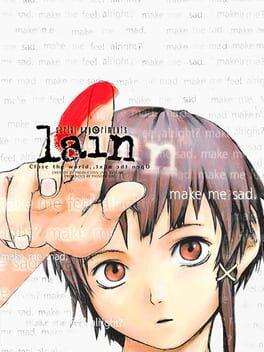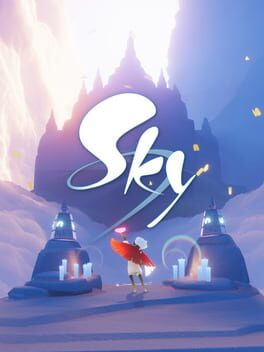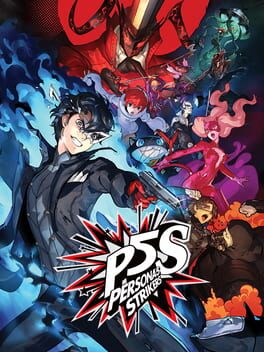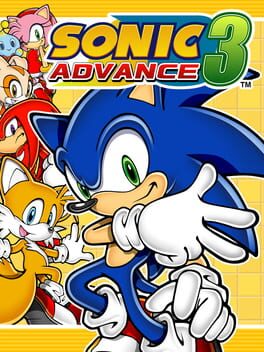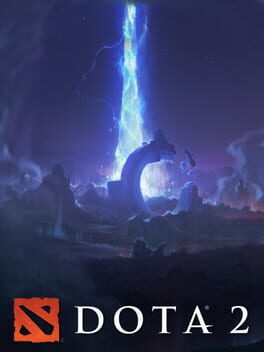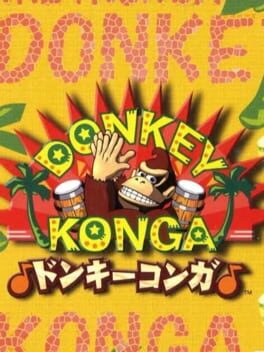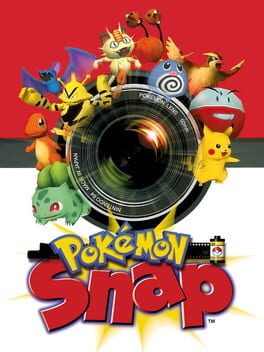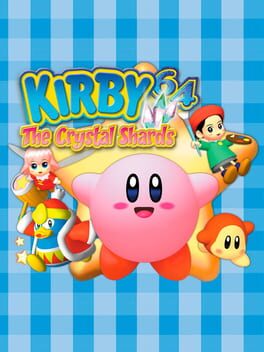Lozicle
105 Reviews liked by Lozicle
Fallout: New Vegas
2010
In twenty or thirty years, if the world's still around by then, I strongly suspect that Bethesda RPGs will exist in that particular space where those of us who lived through them insist to a skeptical audience of video game history enthusiasts how important they were. "You have to understand," we'll say, "I know they're unbelievably glitchy and they play like a bicycle with hexagonal wheels, but these were huge. EVERYONE played these." For all their flaws, these games defined a particular ideal of gaming experience not so much by what they were as by what they aspired (and inevitably failed) to be.
Of course, New Vegas isn't a Bethesda game. It was developed by Obsidian Entertainment and it has a distinctly different design sensibility. At the same time, it clearly is a Bethesda game: the expectations created by Fallout 3 and the constraints imposed by the engine itself make the moment-to-moment experience of playing much more alike its siblings than it is different. And so it exists in the liminal space of the cover artist, stuck with a song but still given the freedom to put their own spin on it.
New Vegas's spin is grand political struggle. Although other Bethesda games have their obligatory world-altering main quests, none extend so deeply through the vast game world or make it seem so much like a real place where real people are struggling with and against one another to make the best of a bad situation. The way it seeks to breathe life into the Mojave Wasteland is the heart of what sets New Vegas apart. Proper Bethesda games grasp desperately at an ideal of "realism" defined by interactive stuff: in the real world you go anywhere, talk to anyone, and touch anything you see, so the most realistic games must be huge maps littered with stuff you can pick up and people who will talk to you about arrows and knees.
My friend Bret and I call this approach "lumpy realism", after the mountain of discrete objects it engenders. And while New Vegas is beholden to lumpiness, it's mostly a trapping of its ancestry. It's more interested in what I'll call "decisive realism", the promise that the choices you make as a player matter in some deep sense. This is still an ideal whose shortcomings will always show the seams of artificiality, but it's also one that makes space for writing and plotting, the unsung heroes of the RPG genre.
For my money though, the most interesting thing about New Vegas is less what it tries to do and more the negative space left behind by what it doesn't try to do. Because it's less interested in leaving interactive stuff all over the place (and possibly because of development time constraints), it has a number of places that just exist. They're not part of a quest, they don't have lore, they're not meaningfully interactive in any way. They're just spaces and models and textures that exist for you to be near and look at. That's a sort of realism too, even if it's not intentional. After all, even though I could interact with anything in the world, in reality, I usually choose to just take it in.
Of course, New Vegas isn't a Bethesda game. It was developed by Obsidian Entertainment and it has a distinctly different design sensibility. At the same time, it clearly is a Bethesda game: the expectations created by Fallout 3 and the constraints imposed by the engine itself make the moment-to-moment experience of playing much more alike its siblings than it is different. And so it exists in the liminal space of the cover artist, stuck with a song but still given the freedom to put their own spin on it.
New Vegas's spin is grand political struggle. Although other Bethesda games have their obligatory world-altering main quests, none extend so deeply through the vast game world or make it seem so much like a real place where real people are struggling with and against one another to make the best of a bad situation. The way it seeks to breathe life into the Mojave Wasteland is the heart of what sets New Vegas apart. Proper Bethesda games grasp desperately at an ideal of "realism" defined by interactive stuff: in the real world you go anywhere, talk to anyone, and touch anything you see, so the most realistic games must be huge maps littered with stuff you can pick up and people who will talk to you about arrows and knees.
My friend Bret and I call this approach "lumpy realism", after the mountain of discrete objects it engenders. And while New Vegas is beholden to lumpiness, it's mostly a trapping of its ancestry. It's more interested in what I'll call "decisive realism", the promise that the choices you make as a player matter in some deep sense. This is still an ideal whose shortcomings will always show the seams of artificiality, but it's also one that makes space for writing and plotting, the unsung heroes of the RPG genre.
For my money though, the most interesting thing about New Vegas is less what it tries to do and more the negative space left behind by what it doesn't try to do. Because it's less interested in leaving interactive stuff all over the place (and possibly because of development time constraints), it has a number of places that just exist. They're not part of a quest, they don't have lore, they're not meaningfully interactive in any way. They're just spaces and models and textures that exist for you to be near and look at. That's a sort of realism too, even if it's not intentional. After all, even though I could interact with anything in the world, in reality, I usually choose to just take it in.
Half-Life 2
2004
I dont know what else I could say about this game besides the fact that I adore the light it shines on mental illness and the help you can recieve for dealing with said illnesses through the protagonist of Lain herself. By the end while it did worsen my mental health I cant help but appreciate what the game set out to do
When I first started The Witcher 3 I really didn't like it. I don't think the first few hours were particularly fun or interesting. Now that I've finished it, I find myself thinking about it all the time.
The thing about The Witcher 3 is that it's often hailed as one of the greatest open-world RPGs of all time, and as an open-world game I think that's a huge overstatement. It's GORGEOUS to look at at all times, even years after its release, don't get me wrong, but its open world is mostly full of bandit camps, places of power (which are basically a kind of upgrade station) and a whole bunch of other stuff that's been largely copy and pasted. There is some interesting variation to be found (this isn't a Bethesda or Ubisoft open-world game) and you'll stumble upon a few things that break the mould, but it's not a shade on a game like Breath of the Wild in this regard.
As an RPG though, fuck yeah. This game really challenged my perception of what an RPG should be. I'd always believed that a good RPG should give you some say over your backstory and should give you a meaningful degree of customisation, but Geralt is Geralt - with an already fleshed-out backstory from novels and previous games and all you can change about him per say is his haircut and armour. Still, as Geralt, you get to make so many fascinating decisions. None that would ever be out of character for him, but ones that are still very morally grey and constantly complex. This isn't a "do you kill the innocent civilian or do you not kill the innocent civilian" kinda game, not even once.
The role you're playing is Geralt, and that's fine, the fact that such a thing is pulled off without ever feeling the character's identity is being compromised is very impressive, and it was playing this game and embodying this character that made me broaden my notion of what an RPG could and maybe even should be. People often point to the Bloody Baron questline as the one that sold them on the game's writing and dilemmas and that's a great one for sure - but for me, the "Ladies Of The Wood" questline and all the chin-scratching decisions it was forcing me to make are what made me realise that I was really quite liking this game after all.
Shortly after, I find myself playing for hours every day. Rowing myself to a tower on a secluded isle in the middle of a giant lake, solving the mystery of a werewolf in the bottom of a hut in the woods, entering Novigrad for the first time...The game as an open-world one might not be amazing mechanically, but the world itself is still amazing, and I think that's an important distinction that most don't make.
The Witcher 3 is gorgeous, so many vast and sprawling landscapes will lay themselves out before you as one of the best videogame soundtracks of the last 10 years will completely ensnare you in its world. Exploration isn't as rewarding as it could be, combat is easily exploitable, but there are very few games written with this much maturity, intrigue and competency in worldbuilding out there today. You can tell that these games are based on novels, because they often feel like they were written by a true writer. Even when the base game's villains underwhelm, CDProjektRed outdo themselves with an original character in the DLC "Hearts of Stone" that I think might be the best antagonist in any videogame ever. Note how I say "antagonist", not "villain". And if the base game somehow wasn't beautiful enough for you, wait until "Blood and Wine" comes along to melt your fucking eyeballs.
Do yourself a favour and go in unspoiled, and don't let the first few hours of this game colour your experience too much. Moreso than a game, it's exactly that - an experience, cliche as it may be to say at such a point. No game with decisions and characters as rich as this could ever be anything but.
The thing about The Witcher 3 is that it's often hailed as one of the greatest open-world RPGs of all time, and as an open-world game I think that's a huge overstatement. It's GORGEOUS to look at at all times, even years after its release, don't get me wrong, but its open world is mostly full of bandit camps, places of power (which are basically a kind of upgrade station) and a whole bunch of other stuff that's been largely copy and pasted. There is some interesting variation to be found (this isn't a Bethesda or Ubisoft open-world game) and you'll stumble upon a few things that break the mould, but it's not a shade on a game like Breath of the Wild in this regard.
As an RPG though, fuck yeah. This game really challenged my perception of what an RPG should be. I'd always believed that a good RPG should give you some say over your backstory and should give you a meaningful degree of customisation, but Geralt is Geralt - with an already fleshed-out backstory from novels and previous games and all you can change about him per say is his haircut and armour. Still, as Geralt, you get to make so many fascinating decisions. None that would ever be out of character for him, but ones that are still very morally grey and constantly complex. This isn't a "do you kill the innocent civilian or do you not kill the innocent civilian" kinda game, not even once.
The role you're playing is Geralt, and that's fine, the fact that such a thing is pulled off without ever feeling the character's identity is being compromised is very impressive, and it was playing this game and embodying this character that made me broaden my notion of what an RPG could and maybe even should be. People often point to the Bloody Baron questline as the one that sold them on the game's writing and dilemmas and that's a great one for sure - but for me, the "Ladies Of The Wood" questline and all the chin-scratching decisions it was forcing me to make are what made me realise that I was really quite liking this game after all.
Shortly after, I find myself playing for hours every day. Rowing myself to a tower on a secluded isle in the middle of a giant lake, solving the mystery of a werewolf in the bottom of a hut in the woods, entering Novigrad for the first time...The game as an open-world one might not be amazing mechanically, but the world itself is still amazing, and I think that's an important distinction that most don't make.
The Witcher 3 is gorgeous, so many vast and sprawling landscapes will lay themselves out before you as one of the best videogame soundtracks of the last 10 years will completely ensnare you in its world. Exploration isn't as rewarding as it could be, combat is easily exploitable, but there are very few games written with this much maturity, intrigue and competency in worldbuilding out there today. You can tell that these games are based on novels, because they often feel like they were written by a true writer. Even when the base game's villains underwhelm, CDProjektRed outdo themselves with an original character in the DLC "Hearts of Stone" that I think might be the best antagonist in any videogame ever. Note how I say "antagonist", not "villain". And if the base game somehow wasn't beautiful enough for you, wait until "Blood and Wine" comes along to melt your fucking eyeballs.
Do yourself a favour and go in unspoiled, and don't let the first few hours of this game colour your experience too much. Moreso than a game, it's exactly that - an experience, cliche as it may be to say at such a point. No game with decisions and characters as rich as this could ever be anything but.
The brilliance of thatgamecompany's works has always been their tight focus on a particular mode of interaction. While Sky clearly comes from the lineage of Flower and Journey, it expands them outwards to support a free-to-play model and an MMO-esque world and in so doing loses the plot of what made them sublime. The result is a messy and often confusing game with multiple currencies and modes of interaction. That said, it's intriguing enough in its messiness that I'm not surprised to have seen it still teeming with players a year after launch.
Persona 5 Strikers
2020
A worthy sequel to an outstanding title. P5S stands on its own as a fun, charming & memorable game that captures much of what made the original so brilliant.
Gameplay-wise P5S is a 'warriors' style game at its core, but carries over many of the mechanics from the Persona series in a manner which feels natural yet unique. At its best, the combat feels right for the phantom thieves as it matches their profound style & energy. The bosses are wonderfully designed & executed and the diversity of the way each of the cast plays is nicely worked into the combat. However, it does come with its issues - standard enemy encounters can feel repetitive and tedious after a while, moving the camera while perched on platforms or trying to aim your gun often feels sluggish despite them being essential mechanics & the in game menu (whilst still looking superb visually like P5) unfortunately feels very slow to navigate in comparison to P5's swift & fluid menu flow - perhaps a minor issue but I still noticed it more often than i'd like since P5S involves a lot of switching out the party, changing equipment, using items etc.
Outside of P5S' combat sequences, however, the game has a very pleasant story to tell. While the narrative is, (as to be expected of a spin-off of a game the size of P5) more concise & straightforward, I still found it to be a lovely experience. The story of this game could potentially still be thoroughly enjoyed without playing the original, but coming from P5 just makes it feel a lot more personal and engaging - being able to see the phantom thieves just enjoy themselves puts a smile on my face. After spending so much of my own time getting to know these characters, having a roadtrip with them and just enjoying the sights, food & culture of each location was a delight. Not to mention the new character additions in P5S were a very pleasant surprise - they are very strong members of the cast that bring with them an unexpected level of nuance. From the trailers I had expected Zenkichi in particular to be little more than a plot device to drive the story, but in truth, he & what he brings to the story might actually be my favourite thing about this game overall, he is quite honestly a wonderfully written character. Same goes for Sophia - at first I had expected that she'd be not much more than a new face to market the game, but in truth she is sweet, endearing & oftimes hilarious as well as an excellent addition to an already stellar cast.
While the story slows down a fair bit in its middle section and it did lose my interest for a while - it turned out to be very worthwhile finishing it as the last few sections of the game were a joy to experience. At the end of the day the highlight for me was less about the major plot points and moreso just hanging out with friends, having laughs & walking around the different locations.
As ever, the Atlus sound team put together yet another astonishing soundtrack, taking what made P5's music great and reimagining it to fit P5S' more fast-paced and action-centric feel. The remixes of classic P5 tracks on top of the new additions make for something that feels familiar yet fresh - highlights for me are 'You are Stronger', 'Daredevil', 'What you Wish For', 'Axe to Grind', 'Sophia's Shop' (banger), the explosive remix of 'Rivers in the Desert' & the emotional 'Towards a Dream'.
Overall an excellent sequel that made me smile, get hyped and even shed a tear. While it took me a while to finally finish it, it really did feel totally worthwhile. I sincerely hope this isn't the last we'll see of the phantom thieves but, if so, then this game wonderfully rounds them off in a very satisfying way.
Gameplay-wise P5S is a 'warriors' style game at its core, but carries over many of the mechanics from the Persona series in a manner which feels natural yet unique. At its best, the combat feels right for the phantom thieves as it matches their profound style & energy. The bosses are wonderfully designed & executed and the diversity of the way each of the cast plays is nicely worked into the combat. However, it does come with its issues - standard enemy encounters can feel repetitive and tedious after a while, moving the camera while perched on platforms or trying to aim your gun often feels sluggish despite them being essential mechanics & the in game menu (whilst still looking superb visually like P5) unfortunately feels very slow to navigate in comparison to P5's swift & fluid menu flow - perhaps a minor issue but I still noticed it more often than i'd like since P5S involves a lot of switching out the party, changing equipment, using items etc.
Outside of P5S' combat sequences, however, the game has a very pleasant story to tell. While the narrative is, (as to be expected of a spin-off of a game the size of P5) more concise & straightforward, I still found it to be a lovely experience. The story of this game could potentially still be thoroughly enjoyed without playing the original, but coming from P5 just makes it feel a lot more personal and engaging - being able to see the phantom thieves just enjoy themselves puts a smile on my face. After spending so much of my own time getting to know these characters, having a roadtrip with them and just enjoying the sights, food & culture of each location was a delight. Not to mention the new character additions in P5S were a very pleasant surprise - they are very strong members of the cast that bring with them an unexpected level of nuance. From the trailers I had expected Zenkichi in particular to be little more than a plot device to drive the story, but in truth, he & what he brings to the story might actually be my favourite thing about this game overall, he is quite honestly a wonderfully written character. Same goes for Sophia - at first I had expected that she'd be not much more than a new face to market the game, but in truth she is sweet, endearing & oftimes hilarious as well as an excellent addition to an already stellar cast.
While the story slows down a fair bit in its middle section and it did lose my interest for a while - it turned out to be very worthwhile finishing it as the last few sections of the game were a joy to experience. At the end of the day the highlight for me was less about the major plot points and moreso just hanging out with friends, having laughs & walking around the different locations.
As ever, the Atlus sound team put together yet another astonishing soundtrack, taking what made P5's music great and reimagining it to fit P5S' more fast-paced and action-centric feel. The remixes of classic P5 tracks on top of the new additions make for something that feels familiar yet fresh - highlights for me are 'You are Stronger', 'Daredevil', 'What you Wish For', 'Axe to Grind', 'Sophia's Shop' (banger), the explosive remix of 'Rivers in the Desert' & the emotional 'Towards a Dream'.
Overall an excellent sequel that made me smile, get hyped and even shed a tear. While it took me a while to finally finish it, it really did feel totally worthwhile. I sincerely hope this isn't the last we'll see of the phantom thieves but, if so, then this game wonderfully rounds them off in a very satisfying way.
Sonic Adventure
1998
So over the past couple years I've really turned around on a lot of Sonic stuff. With the help of some passionate fans I follow, I've sort of learned a lot about what makes Sonic appealing, what unique traits the series holds over its contemporaries, and how to properly appreciate a title as seemingly unwieldy as Sonic Adventure.
The first time I played this game was the DX version on the Gamecube, and I sort of thought nothing of it when it was done. At the time, it was another case of 3D Sonic simply not appealing to me, and I kind of decided that there probably won't ever be a 3D Sonic that really gets at what I want from platformers. But revisiting this game after watching other people play it and really explain why the title is so important to them, I really feel like I "get it" now.
First of all, as most people know, the DX version is largely a visual downgrade of this game, and coming to this version really helped me realize that this is possibly my favorite interpretation of the Sonic cast in 3D. Sonic's model here is this really good in-between of the classic era and what would become his modern look, same goes for all the characters. They have that good classic-era stoutness I like, and I love the stylistic decision to basically make the character's mouths disappear when they're not talking. The lip-synching and some of the animations on the characters show their age, but in a way that is incredibly charming rather than ugly.
Another thing I've come to realize is impressive about this game is just how ambitious every aspect of it is. This came out in 1998 in Japan, and looks insane for the time. Honestly, it's visuals haven't aged that poorly in most cases. Even the human models, which of course are kind of dated, have this stylization to them that really makes them feel like a natural addition to the Sonic world.
Of course, it's not just in visuals that this game shows its ambition. Six playable characters, all with their own playstyle, some of which are extremely different, and all having their own versions of the story that intersect, follow up on, and occasionally (frequently) contradict each other. The first time I played this game, these contradictions, as well as the fact that there are multiple versions of the same scenes with slightly different dialogue, really bothered me, but now I realize that this game is basically Sonic's own Rashomon. Each path is not just a different part of one big story, but also a specific viewpoint of the events of the story. One of the more obvious examples of this is in Tails's story, in which Eggman's lines and voice acting come off as a lot more sinister and menacing than how he comes off in other parts of the story. In Knuckles's story, when he confronts Sonic, Sonic's dialogue is less jokey and more cautious of Knuckles, which I think is hilarious. There are a lot of little moments like this where the differences can really say something about the characters, and sure sometimes it seems kind of unintentional, but the fact that they bothered to record all these different versions of the same cutscenes tells me there's absolutely an intent to have the characters' personality shine through their version of events.
As I said earlier, there are moments where the events of different stories don't really line up at all and just outright contradict each other in a way that can't really be chalked up to differences in perspective, but the fact the game still manages to pull off this whole story style, while telling the story of Tikal and the Echidna tribe in parallel out of order, is super impressive. The story and setting of Sonic Adventure is a really great continuation of the classic trilogy of games and the bits of lore they were able to create. I never liked the idea that 2D and 3D Sonic are just entirely different people, this game sets out to connect them both, and it pulls it off. Like, obviously there's some awkwardness in the dialogue and some story beats, but this game's attitude and spirit manages to just make those into more charm points. Also, the voice acting is just straight up good, like occasionally there might be an awkward phrasing or weird direction, but pretty much everyone here is doing a great job, and the child voicing Tails is cute enough that I'll let his whole thing slide. I've talked a little too much about the story in general, so I'm going to go character by character for a bit.
Sonic in this game is the most I've clicked with a 3D Sonic game. People joke about the spin dash making this game broken, but to me the spin dash being able to skip huge chunks of levels and do all kinds of crazy shit is what makes it good. I love learning how to really use Sonic's movement and spindash to really bust levels wide open, try to find challenge yourself to make it somewhere you think you can't, or find an easier way around an obstacle that would take longer to go around the normal way. The Sonic levels have more openness to them than I've seen in other games. Like, you're still going towards an objective in a linear stage, but it always feels like there's multiple ways to get there, and a lot of fun gimmicks and deviations to make a long the way, which is something that stays true for a lot of characters. I felt really encouraged to look for all the weird nooks and crannies of each level. Also, some of the best set pieces in any 3D Sonic. The Ice Cap Zone snowboard segment not only has god-tier music, but the beginning is beautifully TIMED to the music, and that whole segment is like top 10 moments in any Sonic game for me.
Don't have much to say about Tails or Amy, but I do enjoy the way the game encourages players to make some crazy shortcuts in Tails stages, and he's just fun to control in general. Amy's hammer jump is good, but I wish she didn't take so long to get going fast enough in order to do it.
Knuckles's stages are very interesting as someone who played Sonic Adventure 2 first. The stages here aren't as elaborate, but I think they manage to be a lot of fun to explore around as Knuckles. I love the way Knuckles gets tricked in this game, where Eggman doesn't even try really hard to convince him that Sonic is against him, Eggman just says "I heard Sonic has some master emerald pieces, idiot. Why don't you go find him, dipshit" and Knuckles just believes him. Also how dare they remove the emerald radar's ability to detect more than one piece at a time in SA2, I mean I can understand why but it makes some of the more frustrating levels in SA2 feel that much worse, to know they gave a better radar in the game before.
Before I talk about Big and Gamma, I wanna say I love that their stories come right after the other because their stories barely crossover with the other's. They are very much doing their own thing, but in extremely different ways, and I love the contrast. People talk about Big's story being pointless, but I think every multiple-perspective story needs one guy who has no idea what's actually going and just sort of bumbles their way in and out of the story. It's a fun diversion after four stories that covered a lot of similar ground, just some guy who's fishing for some reason. The fishing isn't that bad, but it does require learning how it works first. Honestly, all you need to do is read the in-game instructions and you're good, it's honestly not hard to figure out. Like, it's not my favorite thing to do in the game but it serves it's purpose well as a fun break from the rest of the story.
To me, the fact that Sonic Team did something like Gamma's story is one of the most, I'm using this word again, ambitious things in this game. You can tell this was a team excited to be able to tell bigger and more complex stories, and having Gamma be this strange, moody, and semi-tragic story that none of the characters are even aware of is such a good choice on their part. The gameplay is also just a better version of the mech segments in SA2. I'm not gonna say Gamma's story is like, Top Ten Saddest Moments in Gaming type shit, but I really love it, it's such a wild thing to witness.
Sonic Adventure is kind of a mess, but one that I love exploring and playing in. It tries so many things, it has so much it wants to do and show the player that it sometimes trips up on itself, it's just too damn excited for its own good, and I love that. The hub world in Sonic Adventure isn't one of my favorites, but the fact that every NPC has their own storyline going on throughout the game, the hidden rooms and secrets you can find, it's so lovely, especially if you grew up with this game. Honestly, even by SA2, some of the magic of this game is lost in the name of streamlining and smoothing off the rough edges.
Lastly, that soundtrack, holy fucking shit that soundtrack. Every character song is a banger, every song in general is, and there's a huge diversity in instruments and song type. Probably the best Sonic soundtrack in my book. Sorry if there's a lot of typos in this one, I gotta go to bed because I spent way too damn long figuring out this review, and I probably still didn't say all I meant to. I might give this game a higher score down the line.
EDIT: OK TWO THINGS I FORGOT TO MENTION. First, I think this game making you fight Chaos 4 three times, with almost no difference in between these fights sucks. Same with having to do Sky Chase in Sonic and Tails's story. Feel like having to repeat boring/annoying sections is one of the weaknesses of this style of story. Second, whoever made the choice to have Open Your Heart play on the first phase of the final boss but not the second should be fired.
EDIT 2: Spent some time trying to get all the emblems. Definitely not nearly as fun as just playing the game, I wish the rank system in later games was in this one. OK, pretty sure that's all now.
The first time I played this game was the DX version on the Gamecube, and I sort of thought nothing of it when it was done. At the time, it was another case of 3D Sonic simply not appealing to me, and I kind of decided that there probably won't ever be a 3D Sonic that really gets at what I want from platformers. But revisiting this game after watching other people play it and really explain why the title is so important to them, I really feel like I "get it" now.
First of all, as most people know, the DX version is largely a visual downgrade of this game, and coming to this version really helped me realize that this is possibly my favorite interpretation of the Sonic cast in 3D. Sonic's model here is this really good in-between of the classic era and what would become his modern look, same goes for all the characters. They have that good classic-era stoutness I like, and I love the stylistic decision to basically make the character's mouths disappear when they're not talking. The lip-synching and some of the animations on the characters show their age, but in a way that is incredibly charming rather than ugly.
Another thing I've come to realize is impressive about this game is just how ambitious every aspect of it is. This came out in 1998 in Japan, and looks insane for the time. Honestly, it's visuals haven't aged that poorly in most cases. Even the human models, which of course are kind of dated, have this stylization to them that really makes them feel like a natural addition to the Sonic world.
Of course, it's not just in visuals that this game shows its ambition. Six playable characters, all with their own playstyle, some of which are extremely different, and all having their own versions of the story that intersect, follow up on, and occasionally (frequently) contradict each other. The first time I played this game, these contradictions, as well as the fact that there are multiple versions of the same scenes with slightly different dialogue, really bothered me, but now I realize that this game is basically Sonic's own Rashomon. Each path is not just a different part of one big story, but also a specific viewpoint of the events of the story. One of the more obvious examples of this is in Tails's story, in which Eggman's lines and voice acting come off as a lot more sinister and menacing than how he comes off in other parts of the story. In Knuckles's story, when he confronts Sonic, Sonic's dialogue is less jokey and more cautious of Knuckles, which I think is hilarious. There are a lot of little moments like this where the differences can really say something about the characters, and sure sometimes it seems kind of unintentional, but the fact that they bothered to record all these different versions of the same cutscenes tells me there's absolutely an intent to have the characters' personality shine through their version of events.
As I said earlier, there are moments where the events of different stories don't really line up at all and just outright contradict each other in a way that can't really be chalked up to differences in perspective, but the fact the game still manages to pull off this whole story style, while telling the story of Tikal and the Echidna tribe in parallel out of order, is super impressive. The story and setting of Sonic Adventure is a really great continuation of the classic trilogy of games and the bits of lore they were able to create. I never liked the idea that 2D and 3D Sonic are just entirely different people, this game sets out to connect them both, and it pulls it off. Like, obviously there's some awkwardness in the dialogue and some story beats, but this game's attitude and spirit manages to just make those into more charm points. Also, the voice acting is just straight up good, like occasionally there might be an awkward phrasing or weird direction, but pretty much everyone here is doing a great job, and the child voicing Tails is cute enough that I'll let his whole thing slide. I've talked a little too much about the story in general, so I'm going to go character by character for a bit.
Sonic in this game is the most I've clicked with a 3D Sonic game. People joke about the spin dash making this game broken, but to me the spin dash being able to skip huge chunks of levels and do all kinds of crazy shit is what makes it good. I love learning how to really use Sonic's movement and spindash to really bust levels wide open, try to find challenge yourself to make it somewhere you think you can't, or find an easier way around an obstacle that would take longer to go around the normal way. The Sonic levels have more openness to them than I've seen in other games. Like, you're still going towards an objective in a linear stage, but it always feels like there's multiple ways to get there, and a lot of fun gimmicks and deviations to make a long the way, which is something that stays true for a lot of characters. I felt really encouraged to look for all the weird nooks and crannies of each level. Also, some of the best set pieces in any 3D Sonic. The Ice Cap Zone snowboard segment not only has god-tier music, but the beginning is beautifully TIMED to the music, and that whole segment is like top 10 moments in any Sonic game for me.
Don't have much to say about Tails or Amy, but I do enjoy the way the game encourages players to make some crazy shortcuts in Tails stages, and he's just fun to control in general. Amy's hammer jump is good, but I wish she didn't take so long to get going fast enough in order to do it.
Knuckles's stages are very interesting as someone who played Sonic Adventure 2 first. The stages here aren't as elaborate, but I think they manage to be a lot of fun to explore around as Knuckles. I love the way Knuckles gets tricked in this game, where Eggman doesn't even try really hard to convince him that Sonic is against him, Eggman just says "I heard Sonic has some master emerald pieces, idiot. Why don't you go find him, dipshit" and Knuckles just believes him. Also how dare they remove the emerald radar's ability to detect more than one piece at a time in SA2, I mean I can understand why but it makes some of the more frustrating levels in SA2 feel that much worse, to know they gave a better radar in the game before.
Before I talk about Big and Gamma, I wanna say I love that their stories come right after the other because their stories barely crossover with the other's. They are very much doing their own thing, but in extremely different ways, and I love the contrast. People talk about Big's story being pointless, but I think every multiple-perspective story needs one guy who has no idea what's actually going and just sort of bumbles their way in and out of the story. It's a fun diversion after four stories that covered a lot of similar ground, just some guy who's fishing for some reason. The fishing isn't that bad, but it does require learning how it works first. Honestly, all you need to do is read the in-game instructions and you're good, it's honestly not hard to figure out. Like, it's not my favorite thing to do in the game but it serves it's purpose well as a fun break from the rest of the story.
To me, the fact that Sonic Team did something like Gamma's story is one of the most, I'm using this word again, ambitious things in this game. You can tell this was a team excited to be able to tell bigger and more complex stories, and having Gamma be this strange, moody, and semi-tragic story that none of the characters are even aware of is such a good choice on their part. The gameplay is also just a better version of the mech segments in SA2. I'm not gonna say Gamma's story is like, Top Ten Saddest Moments in Gaming type shit, but I really love it, it's such a wild thing to witness.
Sonic Adventure is kind of a mess, but one that I love exploring and playing in. It tries so many things, it has so much it wants to do and show the player that it sometimes trips up on itself, it's just too damn excited for its own good, and I love that. The hub world in Sonic Adventure isn't one of my favorites, but the fact that every NPC has their own storyline going on throughout the game, the hidden rooms and secrets you can find, it's so lovely, especially if you grew up with this game. Honestly, even by SA2, some of the magic of this game is lost in the name of streamlining and smoothing off the rough edges.
Lastly, that soundtrack, holy fucking shit that soundtrack. Every character song is a banger, every song in general is, and there's a huge diversity in instruments and song type. Probably the best Sonic soundtrack in my book. Sorry if there's a lot of typos in this one, I gotta go to bed because I spent way too damn long figuring out this review, and I probably still didn't say all I meant to. I might give this game a higher score down the line.
EDIT: OK TWO THINGS I FORGOT TO MENTION. First, I think this game making you fight Chaos 4 three times, with almost no difference in between these fights sucks. Same with having to do Sky Chase in Sonic and Tails's story. Feel like having to repeat boring/annoying sections is one of the weaknesses of this style of story. Second, whoever made the choice to have Open Your Heart play on the first phase of the final boss but not the second should be fired.
EDIT 2: Spent some time trying to get all the emblems. Definitely not nearly as fun as just playing the game, I wish the rank system in later games was in this one. OK, pretty sure that's all now.
I was going to give this game my catch-all negative rating but then after the credits Eevee picked some flowers and ran after me and I just didn't have the heart to do it.
I was constantly complaining about this game all the way through and it does SO MUCH wrong, but even in its most basic, warped, and self-defeating form in this game...Pokemon is still Pokemon.
I was constantly complaining about this game all the way through and it does SO MUCH wrong, but even in its most basic, warped, and self-defeating form in this game...Pokemon is still Pokemon.
Sonic Advance 3
2004
Metal Gear Solid
1998
Dota 2
2013
EarthBound
1994
Donkey Konga
2003
Pokémon Snap
1999
Shinichi Shimomura is a man who directed 3 Kirby games (technically 4 but Nightmare in Dreamland is a remake so I digress), Dreamland 2, Dreamlan 3, and this one here. He introduced concepts such as Animal Helpers, Broom Kirby, Gooey, Adeleine, and of course Dark Matter/Zero. This is what led to his 3 games being referred to in the fanbase as the Dark Matter Trilogy. This final game in the Dark Matter Trilogy is one I highly recommend. Combining copy abilities is such an interesting and fun mechanic I'm legitimately shocked they haven't tried to do it to this capacity again. It adds so much to combat and puzzle solving, and it's just interesting to see what kind of weird concoctions you can make. The music is great, but it's a Kirby game of course the music is going to slap. For Kirby's first leap into 3D the game has aged insanely gracefully visually. I believe Shimomura is also to accredit to the beginning of intense lore within Kirby games, without spoiling too much. The story is simplistic but still interesting and engaging. The only flaw I have with the game is collecting all the Crystal Shards is more trouble than it's worth (The game is called Kirby 64 and yet they have 74 shards???). Other than that, I think this game definitely deserves more praise and attention as one of the most creative and interesting Kirby games, and we have Shimomura to thank. Oddly enough, Shimomura disappeared without a trace in 2002. No pictures of the man exist online, and no official obituary was released leading to believe that he couldn't have died. HAL and Nintendo stopped using all of Shimomura's creations in Kirby games after his disappearance, most likely out of respect for him. Gone were the Animal Helpers, Gooey, Adeleine, and of course Dark Matter/Zero. This of course was changed in 2018 when Kirby Star Allies was released, featuring some of these characters. So who knows? Maybe they'll revisit these concepts in a future game sometime.


